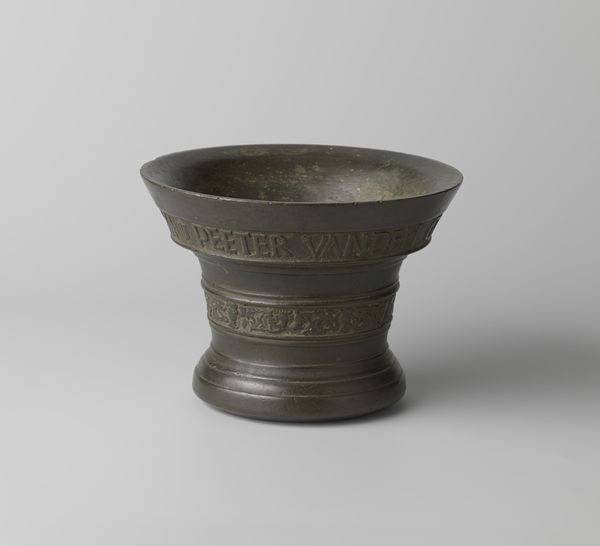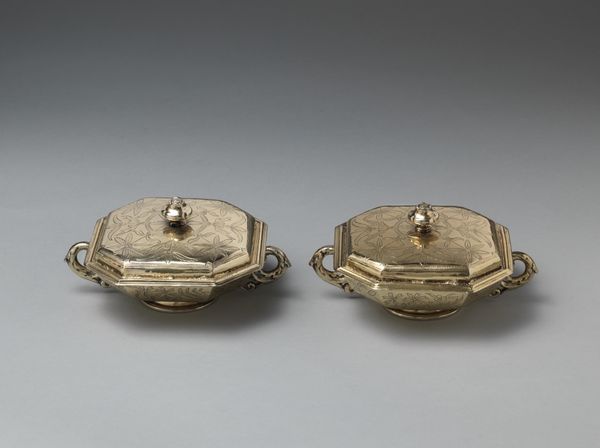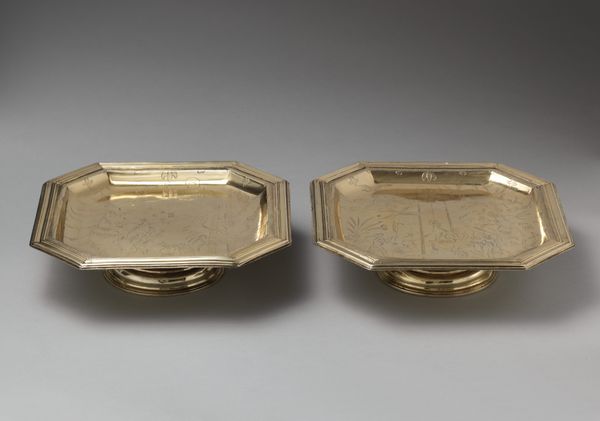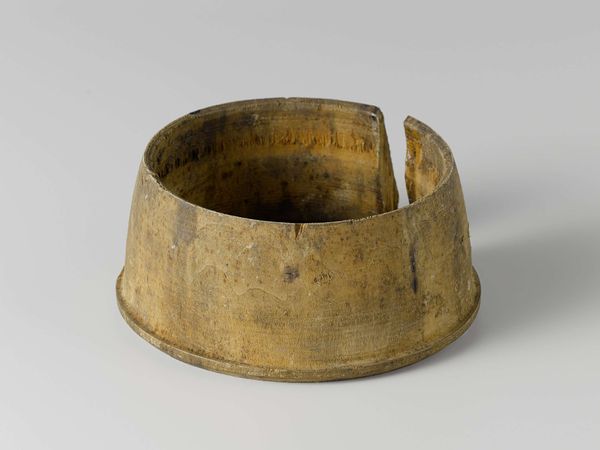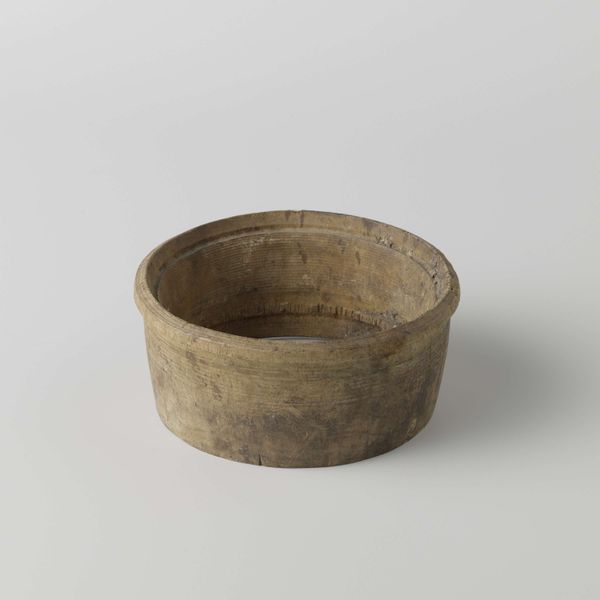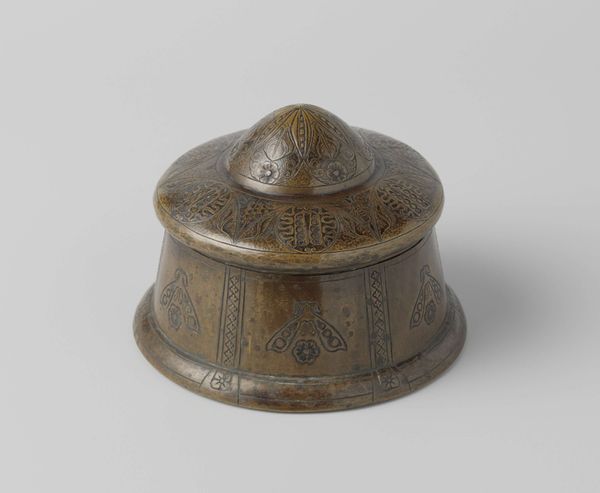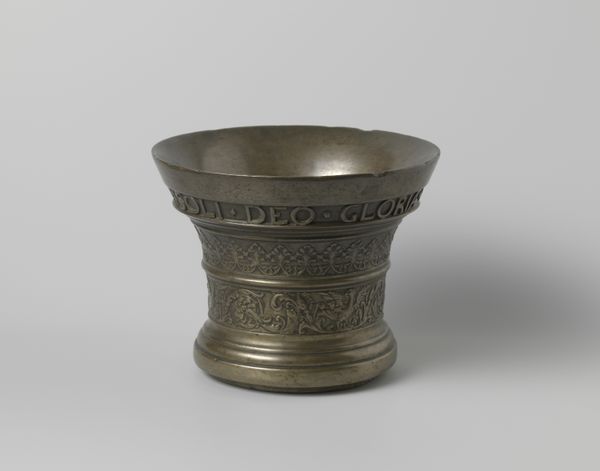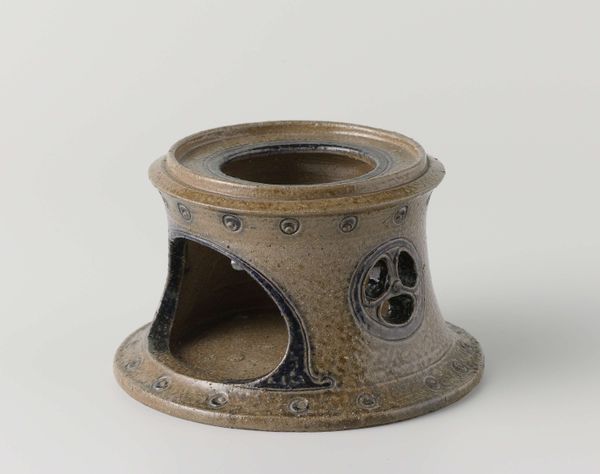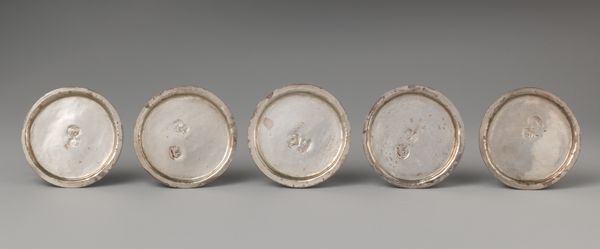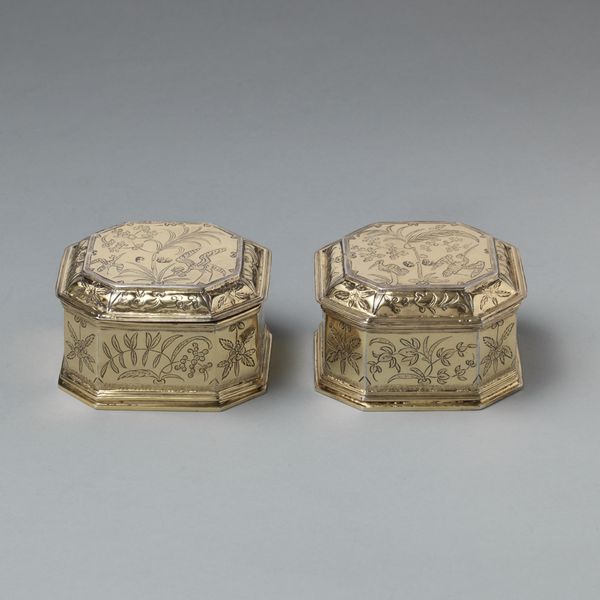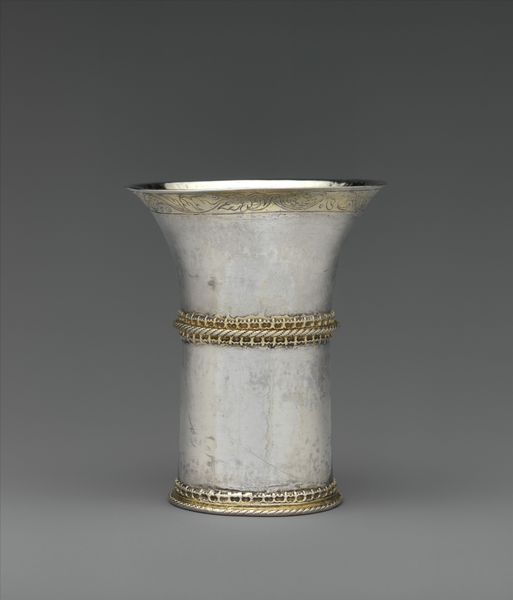
metal, architecture
#
neoclacissism
#
metal
#
geometric
#
classicism
#
decorative-art
#
architecture
Dimensions: a: H. 1 3/4 in. (4.4 cm); Diam. 2 in. (5.1 cm) b: Diam. 3 in. (7.6 cm)
Copyright: Public Domain
Curator: Well, isn't that charmingly…miniature? It looks like a couple of rather fancy, gilded thimbles. Editor: Indeed. What you're seeing are, in fact, miniature Column Base and Capital. Created sometime between 1815 and 1835, we believe they come from the hand of Henry Kellam Hancock. Crafted from metal, they reside within the decorative arts collection here at the Met. Curator: Hancock, you say? Sounds like a name fit for signing declarations! The detail is astounding. Look at the precision – like golden microchips from another, more ornamental dimension. It does give a sense of power too though, despite the size; I'd place these under a magnifying glass. Editor: The size certainly plays tricks on the mind. As remnants of neoclassical taste, these fragments, base and capital, echo a bygone grandeur and monumental permanence on a domestic scale. One can imagine them inspiring awe in their owners, acting almost as talismans of civilized virtues and inherited authority. Curator: Talismans…I like that! It’s like owning a tiny piece of architectural history that has a decorative presence. Each miniature cut and engraving evokes a feeling of admiration for classical ideals. There's something delightfully self-aware about it, isn't there? Like history playing with itself. Editor: Yes! Consider how ancient columns became potent signifiers of power, knowledge, and permanence, repurposed here into objects of contemplation and symbols of cultivated taste within private interiors. It becomes more about how they evoke history rather than replicating it, prompting discussions about cultural identity and value systems in material culture. Curator: So, from grand statement to tiny memento. Editor: Exactly, inviting reflections on the changing significance of historical forms across time. It is something grand to hold in one's palm, and one does leave richer with that realization.
Comments
No comments
Be the first to comment and join the conversation on the ultimate creative platform.

